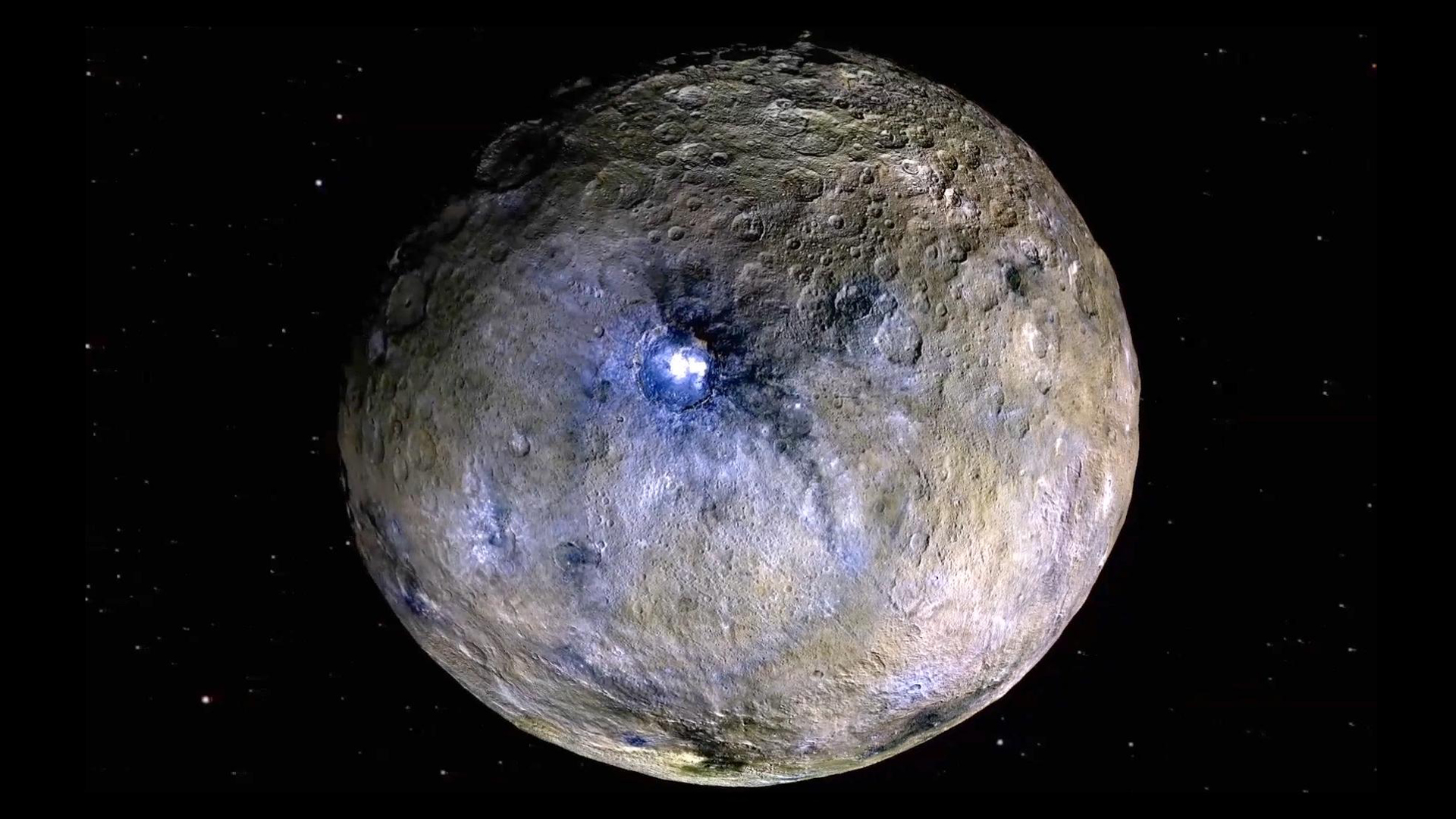Radioactive heat in Ceres drove dwarf planet's fractured geology
The jagged terrain on this little world has a complicated origin story.

Radioactive matter within the dwarf planet Ceres may help drive geological activity there, a new study finds.
With a diameter of about 585 miles (940 kilometers), Ceres is by far the largest member of the asteroid belt located between Mars and Jupiter. Although Ceres is the closest dwarf planet to Earth, for more than two centuries after its discovery in 1801, much remained unknown about it, as its surface features are barely visible to even the most powerful telescopes on Earth.
Then, in 2015, NASA's Dawn spacecraft became the first orbiter around Ceres. The probe revealed the dwarf planet's surface was covered in features resembling those from tectonic activity, such as a continent-like plateau and criss-crossing fractures.
These signs of geological activity on Ceres were surprising because they suggested the world's interior might still be warm. The collisions between the rocks that end up forming worlds can generate heat, but previous research suggested that a body as small as Ceres should have cooled off and lost any such heat a long time ago.
Related: Biggest mysteries of the dwarf planet Ceres
Now research suggests heat from the decay of radioactive elements within Ceres might help keep it geologically active. The scientific team detailed their findings in the June issue of the journal American Geophysical Union Advances.
The scientists analyzed the interior of Ceres using computer models previously applied to bigger planets. Their results suggested that because Ceres is relatively small, it lacked a gravitational pull strong enough to result in powerful collisions to heat it up. As such, Ceres may have started off cold, instead of getting born hot like Earth, and similar larger worlds.
Get the Space.com Newsletter
Breaking space news, the latest updates on rocket launches, skywatching events and more!
Over time, the decay of radioactive elements such as uranium and thorium within Ceres may have heated up the dwarf planet, until its interior became unstable.
"What I would see in the model is, all of a sudden, one part of the interior would start heating up and would be moving upward and then the other part would be moving downward," study lead author Scott King, a geoscientist in the Virginia Tech College of Science, said in a statement.
Such instability might explain some of the surface features the Dawn mission saw on Ceres. For example, its large plateau formed on just one side of the dwarf planet, with nothing similar on the other side, and its criss-crossing fractures were clustered around the plateau in a single location. The concentration of these features in one hemisphere suggested instability concentrated on just one side of the asteroid.
"It turned out that you could show in the model that where one hemisphere had this instability that was rising up, it would cause extension at the surface, and it was consistent with these patterns of fractures," King said in a statement.
These findings suggest Ceres did not follow a planet's typical pattern of hot first and cool second, but a pattern of cool, hot and then cool again. "What we've shown in this paper is that radiogenic heating all on its own is enough to create interesting geology," King said in a statement.
King sees similarities between Ceres and the small icy moons of Saturn and Uranus. He looked forward to researching the interiors of those moons as well.
"Some of these moons are not too different in size from Ceres," King said in a statement. "I think applying the model would be really exciting."
Follow us on Twitter @Spacedotcom and on Facebook.
Join our Space Forums to keep talking space on the latest missions, night sky and more! And if you have a news tip, correction or comment, let us know at: community@space.com.

Charles Q. Choi is a contributing writer for Space.com and Live Science. He covers all things human origins and astronomy as well as physics, animals and general science topics. Charles has a Master of Arts degree from the University of Missouri-Columbia, School of Journalism and a Bachelor of Arts degree from the University of South Florida. Charles has visited every continent on Earth, drinking rancid yak butter tea in Lhasa, snorkeling with sea lions in the Galapagos and even climbing an iceberg in Antarctica. Visit him at http://www.sciwriter.us
